AI Frameworks & Libraries are applications of artificial intelligence transforming industries. Businesses can use them to develop innovative products, enhance business operations, and make decisions.
Powerful AI libraries are used to design intelligent systems by making processes easier and development faster. They make things easier for developers, sometimes by assisting in machine learning development or deploying an AI-powered application.
In this blog, we will discuss the top AI frameworks 2025 and AI libraries that empower innovation and drive progress. This AI framework list will help you choose the right option from the top AI frameworks & libraries to add power to your AI projects.
What is An AI Framework?
The first step towards developing impactful AI solutions is understanding available tools. AI libraries and frameworks are one such tool. They help build, train, and deploy AI models. This makes it easier to improve productivity and deliver user-focused solutions.
AI frameworks: These are comprehensive platforms providing pre-built components. They help in designing, training, and deploying machine learning and deep learning models. They simplify the complex AI process and allow developers to focus on improving performance and outcomes.
AI Libraries: These are collections of reusable functions, modules, and scripts that help in implementing specific AI functionalities. They work as building blocks for AI frameworks. Moreover, they also offer specialized tools for tasks like data processing, visualization, and model evaluation.
Both – the top AI frameworks and libraries complement each other, enabling developers to build scalable and efficient AI business solutions.
Why Do You Need AI Frameworks & Libraries – Their Benefits
Staying updated with the top AI frameworks & libraries is extremely important for reducing development complexity and increasing efficiency. Companies using them will not waste time on creating something new while innovating on other fronts as they won’t have to develop everything from the ground up. Here are some of the reasons why businesses are choosing
1. Simplifies Development Process
AI frameworks and libraries provide pre-built functions and tools. These reduce the amount of code developers need to write. This also speeds up the process. Therefore they simplify otherwise mundane and time-consuming tasks, like data preprocessing or model training.
2. Cost of Developing Solutions
This is because, in AI software development, developers manually create the framework. This often comes with many expenses and time too. But when you use a framework, it saves all of that. So it’s comparatively more cost-effective, particularly for startups and small businesses where the budget is quite limited.
3. Performance and Accuracy are Much Improved
AI frameworks have in-built algorithms and models. Developers optimize and fine-tune them for better performance and accuracy. They simplify the development process. Therefore, one doesn’t have to spend more time manually doing research and development as they offer pre-built solutions.
4. Easy integration with other systems
AI frameworks are built to be integrated with other systems and technologies with ease. This makes it possible for businesses to upgrade their current operations with AI-powered capabilities. The integration is done in such a way that the new AI systems function seamlessly with other applications.
5. Community Support and Regular Updates
The latest AI frameworks have an active developer community. Continuous updates and resource sharing amongst members keep businesses in touch with new developments in AI. This keeps them up to date with changes in this fast-paced technology scenario.
Commercial Vs Open-Source AI Frameworks: Which One is Better?
The choice of the top AI frameworks & libraries significantly impacts the results. Open-source AI frameworks prioritize flexibility and community-driven innovation, offering high customization but often requiring greater technical expertise. In contrast, commercial frameworks emphasize robust infrastructure, dedicated support, and optimized performance, though they may limit customization and user control. Understanding these differences in cost, transparency, control, support, performance, security, and innovation helps in selecting the most suitable framework for your needs.
| Feature | Open-Source | Commercial |
|---|---|---|
| Cost | Free | Licensed/Subscription |
| Transparency | Public | Proprietary |
| Customization | High | Limited |
| Control | User | Vendor |
| Support | Community | Vendor |
| Performance | Varied | Optimized |
| Security | Potential risks | Vendor managed |
| Innovation | Community-driven | Vendor-driven |
Top AI Frameworks for Developers in 2025
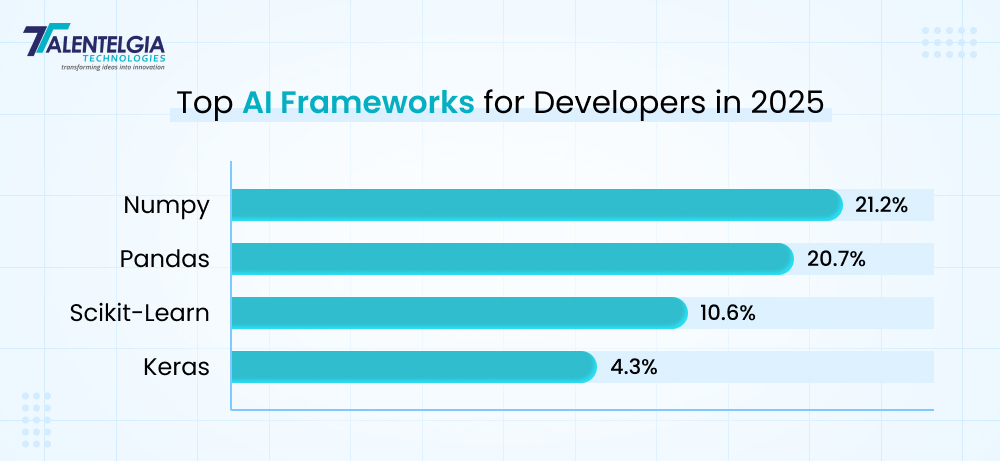
AI frameworks are primary tools to increase the efficiency of the development process. They help provide structure and support in AI development when it comes to complex models. They are designed to handle large datasets, train neural networks, and deploy AI applications with efficiency. Below, we will look at some of the most powerful and trusted AI frameworks available today. Each of these offers unique features suited to different development needs. Check out this AI framework examples list to know more:
1. TensorFlow
The most widely known and trusted AI framework is TensorFlow, developed by Google. They provide an easy development and deployment model for machine learning models. It can scale and adapt to different tasks. This makes it the developers’ first choice for deep learning models and AI solutions in research and production environments.
TensorFlow is diverse in its implementation and can solve numerous tasks. This explains its wide usage of neural networks and NLP by industries like health and finance.
TensorFlow, an open-source AI framework, incorporates several use cases into actual development due to its scalability. This is one of the primary reasons TensorFlow is in high demand in business-to-business deployment.
Key Features
- Flexible deployment on CPUs, GPUs, and TPUs enables optimal performance.
- Very wide applications in neural network models, more sophisticated NLP models.
- TensorFlow Lite created deep learning model optimizations for mobile and IoT devices for real-time AI applications.
Drawbacks:
- Complexity: Steep learning curve.
- Deployment: Challenging to deploy models.
- Resource Intensive: Requires significant GPU resources.
- Large Model Size: Difficult to deploy on resource-constrained devices.
Best USed For: Applications for deep learning projects, computer vision, and NLP projects. General-purpose production systems where the level of research is high.
2. PyTorch
PyTorch is an appealing and user-friendly AI framework example that is becoming popular in the research community. It has been developed by Facebook. Unlike many AI frameworks, which either originated on or include static computation graphs, this was designed to be dynamic by nature, thus making it more amenable to debugging and modification at runtime. Its dynamism makes it a favorite among AI researchers and developers seeking to experiment and iterate through new ideas.
Increased popularity also entailed greater support from the community for frequent updates along with vast libraries of developer assets. PyTorch natively supports distributed training, allowing efficient scaling of the models. Apart from that, PyTorch integrates seamlessly into TorchServe so that one may easily deploy his trained models within production environments.
Key Features
- Make dynamic computation graphs and are very flexible and easy to modify and debug models.
- Have native support for distributed training, which could be really helpful for training very large models spread over many machines.
- TorchServe can make easier and smoother deployments of PyTorch models in the real world.
- Have great documentation and community, so are a great choice for both researchers and developers.
Drawbacks:
- Relatively New: Smaller community and less mature tooling.
- Less Mature Ecosystem: Fewer pre-trained models and libraries.
- Less Production-Ready: Deployment and scaling options may be less developed.
- Dynamic Graphs: Can be less efficient than static graph frameworks.
Best Used For: PyTorch is good for AI development focused on research, deep learning experimentation, and innovation. This relies mainly on flexibility and iteration.
3. Keras
Keras is a high-level neural network application programming interface, part of the TensorFlow framework that simplifies AI development. It is also one of the most widely used deep learning frameworks for prototyping and rapid development in deep learning. Moreover, it is preferred equally by novices to even experts when they need to dive into an AI model. This enables developers to rapidly build and test AI models with a user-friendly interface for building neural networks.
Keras also allows experienced developers to optimize their models for more complex neural networks that are deeper. Since it runs on top of TensorFlow, Keras has all the powerful capacities of TensorFlow. However, it also makes building AI models intuitive and accessible.
Key Features:
- It’s very simple and modular in design, perfect for beginners.
- It supports rapid prototyping that enables quick experimentation and testing of models.
- Fully compatible with TensorFlow and other popular AI libraries, with a flexible development environment.
- Pre-trained models are offered for transfer learning, which aids in utilizing existing knowledge to improve new models.
Drawbacks:
- Limited Flexibility: This may limit flexibility for advanced users.
- Reliance on Backends: Issues with backends can affect Keras applications.
- Less Suitable for Research: May not be ideal for cutting-edge research.
- Limited Control: This can make it difficult to understand and debug issues.
Best Used For: Keras is great for beginners and developers seeking an easy-to-use framework for rapid model prototyping. This makes it a great place to start for people new to AI and deep learning.
4. Microsoft Cognitive Toolkit (CNTK)
The Microsoft Cognitive Toolkit, commonly referred to as CNTK, is a powerful, highly efficient deep-learning AI framework from Microsoft. Its purpose is to manage the complexity of deep learning, including training large neural networks and processing huge datasets. In addition, CNTK is known for its speed and scalability. Therefore it is ideal for enterprise-grade AI solutions that require high performance and scalability.
CNTK is optimized for performance and accuracy. This allows the developer to make AI models deployable quickly and in the right quantity. This framework includes inbuilt support for distributed training. This is very important for training large models across different machines or data centers.
Key features
- High-performance model evaluation, ensuring that AI is developed speedily and efficiently.
- Built-in support for distributed training, scaled up, with reduced time.
- Interoperability with other programming languages like Python, C++, and Java. This means developers can use any of these languages they prefer.
Drawbacks:
- Smaller Community: Fewer resources available.
- Less Widely Adopted: Fewer developers are familiar with it.
- Limited Flexibility: May be less flexible for customizing training or research.
- Focus on Microsoft Ecosystem: May be less suitable for developers outside of the Microsoft environment.
Best for: CNTK is best for enterprise-level AI solutions where high performance and scalability are critical. It is ideal for businesses looking to deploy large-scale AI models with fast, efficient training processes.
5. Apache MXNet
Apache MXNet is a deep-learning AI framework developed by Amazon. It supports the properties that balance between performance and flexibility. It tends to deal with tasks that require deep learning, along with infrastructure that involves cloud and distributed computing. Symbolic and imperative programming is allowed in MXNet, making the development of a model very flexible.
MXNet is also highly compatible with other AWS services. This makes it the right choice for cloud-native AI development to scale AI solutions easily. It can support a number of programming languages including Python, Scala, and C++, which further makes it versatile and suitable for a wide range of AI applications.
Key Features:
- Supports both symbolic and imperative programming; it leaves much more freedom to the designer of the model.
- Efficient use of deep learning applications in cloud and distributed modes
- Smoothly integrates with tools of AWS so that cloud-native AI development becomes possible.
- Supports Many programming languages: Python, Scala, and C++.
Drawbacks:
- Smaller Community: Limited resources and support.
- Less Mature Ecosystem: Fewer pre-trained models and libraries.
- Focus on Cloud: This may not be well-suited for on-premise deployments.
- Less User-Friendly: Steeper learning curve and less user-friendly API
Best For: For cloud-native AI development and deployment at scale, MXNet is perfect for large-scale enterprise usage with its infrastructure on AWS services. It’s fantastic for businesses developing and deploying AI applications at scale across the cloud.
Top AI Libraries in 2025 for Developers
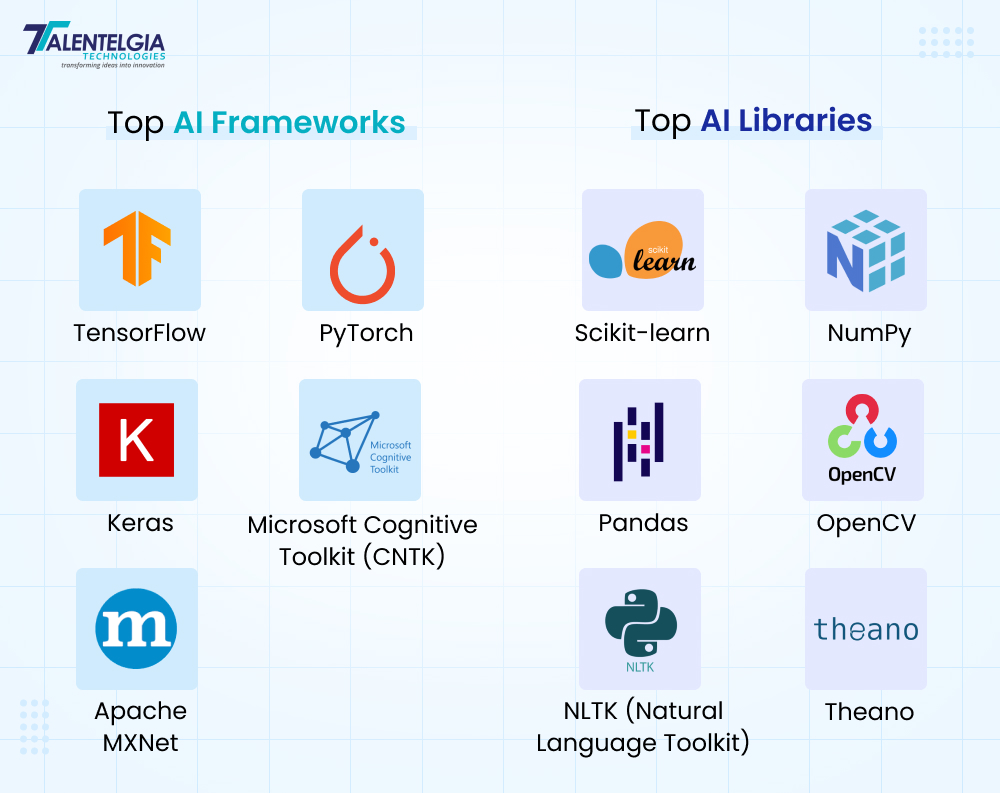
AI libraries are crucial in speeding up the development of AI. They carry pre-built modules and functions, which simplify the coding process and expedite the processing of complex data tasks, such as machine learning and natural language processing. These libraries help developers handle heavy tasks, giving them the ability to focus on developing powerful AI applications. Below are some of the top AI libraries in 2025 that will enhance your development projects.
1. Scikit-learn
Scikit-learn is a high-performance library for AI designed for machine learning tasks. It gives access to several algorithms for data mining, analysis, and modeling. Its usability is relatively high, especially in Python development. Due to its ability to be easily interfaced with any other libraries from within Python, it is ideal for establishing a pipeline in machine learning.
Scikit-learn is used for the simplicity and versatility of tasks such as regression, classification, and clustering. Be it data mining, predictive analytics, or statistical modeling, this AI library offers a complete set of tools to handle complex machine learning tasks efficiently.
Key Features:
- Simple and efficient tools for building data models.
- Supports regression, classification, clustering, and dimensionality reduction algorithms.
- Compatible with other Python libraries like NumPy and SciPy, enhancing its versatility.
Drawbacks:
- Limited deep learning support.
- Can be slow for large datasets.
- Less flexible for custom models.
- May not be as efficient for some tasks.
Best for: Classic machine learning tasks, including statistical modeling, data mining, and analytics.
2. NumPy
NumPy is the base AI library for any kind of numerical computing carried out in Python. In AI development, it acts as a base tool that provides support for multi-dimensional arrays along with any type of high-performance mathematical operations. This makes it useful for handling big data and mathematical computations.
As the heart of scientific computing in Python, NumPy enables developers to do sophisticated linear algebra and matrix operations. Its power to fast computing interaction with other AI libraries makes it very essential for processing data in AI-driven projects.
Key Features
- High-performance mathematical computing and array processing
- Well-developed functions for linear algebra, Fourier transforms, and random number generation
- Seamless compatibility with other AI libraries, making it easy for integration into complex workflows.
Drawbacks
- Steeper learning curve.
- Limited data manipulation.
- Less suitable for complex data structures.
- Can be memory-intensive.
Best For: NumPy is best suited for mathematical computation, large dataset handling, and data processing in AI projects.
3. Pandas
Pandas is an open-source AI library that offers data manipulation and analysis at speed and flexibility. It allows the manipulation of structured data by cleaning, transforming, and visualizing the information on the datasets.
With the user-friendly data structure, the DataFrame, data is efficiently filtered, aggregated, and transformed in a straightforward way.
It is utilized in many cases for data preprocessing, cleaning, and transformation so that the developer prepares the data for use in machine learning models and other AI applications.
Main Features
- Pandas include very simple-to-use data structures, DataFrames, which help manage structured data.
- Pandas tools allow filtering, grouping, aggregation, and transforming data.
- It can read a wide variety of formats of data like CSV, Excel, and SQL.
Drawbacks:
- Memory consumption.
- Performance limitations.
- Less suitable for low-level operations.
- Limited deep learning support.
Best Used for: Pandas is primarily intended for data pre-processing, cleaning, and transformation. This serves to form a basis for AI applications based on data.
4. OpenCV
OpenCV is the abbreviation for Open Source Computer Vision AI Library. It is a highly powerful library, which has widely been put into use for computer vision applications. With real-time image and video processing tools, OpenCV is very important for object detection, facial recognition, and motion tracking applications.
Due to its rich set of functions for image manipulation and processing, it has been highly used in AI applications requiring visual data analysis.
OpenCV is used in multiple programming languages, such as Python, C++, and Java; hence, the development can be done in multiple platforms and environments.
Key Features
- Real-time image and video processing.
- Machine learning tools for object detection, object recognition, and tracking.
- Supports multiple programming languages like Python, C++, and Java.
Drawbacks:
- Steeper learning curve.
- Computational cost.
- Platform dependencies.
- Limited high-level abstraction.
Best For: This is best suited for computer vision applications, especially concerning image processing, object detection, or facial recognition.
5. NLTK (Natural Language Toolkit)
NLTK is a specialized AI library, developed specifically for NLP. It gives a wide variety of tools and pre-built models to execute all sorts of tasks, including text processing: sentiment analysis, text classification, and language translation. NLTK’s resources make it an excellent choice for developers who want to build sophisticated NLP applications.
The library benefits especially working people due to functionalities such as tokenization, parsing, and classification. Its resources also tend to be plentiful for linguistics and computational linguistics research.
Core Features
- Ready-made models and tools for text processing, sentiment analysis, and translation using machine language.
- Tokenizing, parsing classification, stemming, and other related functions
- Elaborate documentation and vast resources on the subject of linguistics.
Drawbacks
- Slow for large datasets.
- Limited deep learning integration.
- Large library size.
- Can be less efficient for production.
Best suited for any kind of NLP-related text analysis job, such as sentiment analysis or text classification. Broadly speaking, anything related to a language.
Theano
Theano is a popular numerical computational AI library that has contributed to deep learning frameworks. Written in Python, it has been optimized and defined mathematical expressions for evaluation. Therefore, this library is used for handling multidimensional arrays in the best manner.
Although this is a relatively lower-level version compared to Keras, it is still good for developers who are interested in taking control over their AI models in terms of mathematics. It is a means of quick development for deep learning experts and has high efficiency in computationally expensive tasks.
Although not as smooth as high-level APIs like Keras, Theano is flexible and efficient. Its tight integration with GPUs enables it to run operations at blazing speeds. That is why it is a preferred choice for developers involved in performance-critical AI applications.
Key Features:
- Complete control over mathematical computations makes it great for fine-tuning.
- GPU optimized for great computational speed.
- It supports automatic differentiation, which is useful for simplifying the implementation of gradient-based learning algorithms.
- Extremely extensible and compatible with other libraries, which provides flexibility for very complex projects.
Drawbacks:
- Steeper learning curve.
- Less user-friendly.
- Time-consuming development process.
- Can be less flexible for certain tasks
Best For: Theano is most suitable for experienced developers who need fine control over mathematical models and want to optimize performance for computationally demanding tasks. It may not be the first choice for beginners, but its robustness and efficiency make it an excellent framework for advanced AI research and development.
Also Read: What is Theano?
How to Choose the Correct AI Framework & Libraries?
| Framework | Strengths | Weaknesses | Best Suited For |
|---|---|---|---|
| Framework | Strengths | Weaknesses | Best Suited For |
| TensorFlow | Scalable, flexible, large community, production-ready, supports diverse hardware | Can be complex for beginners | Deep learning, computer vision, NLP, production deployments |
| PyTorch | User-friendly, dynamic computation graph, excellent for research, strong community | May have limitations in production deployment | Research, deep learning, experimentation |
| Keras | Easy to use, rapid prototyping, modular, beginner-friendly | Less flexibility compared to TensorFlow | Beginners, rapid prototyping, building and training neural networks |
| CNTK | High-performance, scalable, supports distributed training | Smaller community compared to TensorFlow and PyTorch | Enterprise-level AI solutions, large-scale training |
| MXNet | Efficient for both symbolic and imperative programming supports multiple languages, good for cloud-based AI | Smaller community than TensorFlow and PyTorch | Cloud-native AI development, large deployments |
| Theano | flexible and efficient. Its tight integration with GPUs enables it to run operations at blazing speeds | high efficiency in computationally expensive tasks. | Research, deep learning, experimentation |
Building successful, scalable, and high-performing AI models requires using suitable AI frameworks and libraries. As there are numerous tools, developers need to compare features like scalability, flexibility, ease of integration, and compatibility with specific project needs.
Tools designed for machine learning, NLP, or computer vision can greatly accelerate development and improve results. The right choice of AI frameworks and libraries not only simplifies the coding but also streamlines the testing and deployment. This ensures smooth performance in the production environment.
- Scalability: Ability to handle large datasets and complex models.
- Flexibility: Adaptability to various AI tasks and integration with other systems.
- Performance: Efficiency in training and inference.
- Community Support: Availability of resources, tutorials, and an active community for assistance.
- Ease of Use: Learning curve and user-friendliness of the framework.
- Project Requirements: Alignment of the framework’s capabilities with your needs.
- Specialized Tools: Frameworks tailored for specific domains like machine learning, NLP, or computer vision can significantly accelerate development.
Similar Blogs You Can Check:
Future of Top AI Libraries & Frameworks
Top AI frameworks and libraries, in the near future, look promising for their exciting developments. We can expect to see better user experience interfaces that open these products to more extensive developers’ coverage. Moreover, better and faster training performance and efficiency will also be evident. Therefore, the future of the top AI libraries and frameworks is bright as they allow developers to train larger, more complex models.
Emphasis is also likely on explainability and interpretability as building blocks toward transparency with AI systems. With the gradual transformation, we would see domain-specific frameworks. Top AI libraries & frameworks are beneficial for industries like healthcare or finance, with corresponding domain-specific tools and optimizations.
Also read: AI Ideas for Businesses
Conclusion
Today's AI frameworks and AI libraries make AI development as accessible as it has ever been. Developing deep learning models or processing big data, they have simplified complex tasks and accelerated innovation.
Developing AI solutions in healthcare, finance, or e-commerce-the choice really depends on the right framework or library.
Choosing the right AI libraries and frameworks is important. Whether you're developing cutting-edge AI solutions for healthcare, revolutionizing financial services with predictive models, or enhancing customer experiences in e-commerce. They determine the success of your project. So, by using the strengths of these powerful tools, developers can efficiently build robust and impactful AI systems to drive progress in their business.


 Healthcare App Development Services
Healthcare App Development Services
 Real Estate Web Development Services
Real Estate Web Development Services
 E-Commerce App Development Services
E-Commerce App Development Services E-Commerce Web Development Services
E-Commerce Web Development Services Blockchain E-commerce Development Company
Blockchain E-commerce Development Company
 Fintech App Development Services
Fintech App Development Services Fintech Web Development
Fintech Web Development Blockchain Fintech Development Company
Blockchain Fintech Development Company
 E-Learning App Development Services
E-Learning App Development Services
 Restaurant App Development Company
Restaurant App Development Company
 Mobile Game Development Company
Mobile Game Development Company
 Travel App Development Company
Travel App Development Company
 Automotive Web Design
Automotive Web Design
 AI Traffic Management System
AI Traffic Management System
 AI Inventory Management Software
AI Inventory Management Software
 AI Software Development
AI Software Development  AI Development Company
AI Development Company  AI App Development Services
AI App Development Services  ChatGPT integration services
ChatGPT integration services  AI Integration Services
AI Integration Services  Generative AI Development Services
Generative AI Development Services  Natural Language Processing Company
Natural Language Processing Company Machine Learning Development
Machine Learning Development  Machine learning consulting services
Machine learning consulting services  Blockchain Development
Blockchain Development  Blockchain Software Development
Blockchain Software Development  Smart Contract Development Company
Smart Contract Development Company  NFT Marketplace Development Services
NFT Marketplace Development Services  Asset Tokenization Company
Asset Tokenization Company DeFi Wallet Development Company
DeFi Wallet Development Company Mobile App Development
Mobile App Development  IOS App Development
IOS App Development  Android App Development
Android App Development  Cross-Platform App Development
Cross-Platform App Development  Augmented Reality (AR) App Development
Augmented Reality (AR) App Development  Virtual Reality (VR) App Development
Virtual Reality (VR) App Development  Web App Development
Web App Development  SaaS App Development
SaaS App Development Flutter
Flutter  React Native
React Native  Swift (IOS)
Swift (IOS)  Kotlin (Android)
Kotlin (Android)  Mean Stack Development
Mean Stack Development  AngularJS Development
AngularJS Development  MongoDB Development
MongoDB Development  Nodejs Development
Nodejs Development  Database Development
Database Development Ruby on Rails Development
Ruby on Rails Development Expressjs Development
Expressjs Development  Full Stack Development
Full Stack Development  Web Development Services
Web Development Services  Laravel Development
Laravel Development  LAMP Development
LAMP Development  Custom PHP Development
Custom PHP Development  .Net Development
.Net Development  User Experience Design Services
User Experience Design Services  User Interface Design Services
User Interface Design Services  Automated Testing
Automated Testing  Manual Testing
Manual Testing  Digital Marketing Services
Digital Marketing Services 
 Ride-Sharing And Taxi Services
Ride-Sharing And Taxi Services Food Delivery Services
Food Delivery Services Grocery Delivery Services
Grocery Delivery Services Transportation And Logistics
Transportation And Logistics Car Wash App
Car Wash App Home Services App
Home Services App ERP Development Services
ERP Development Services CMS Development Services
CMS Development Services LMS Development
LMS Development CRM Development
CRM Development DevOps Development Services
DevOps Development Services AI Business Solutions
AI Business Solutions AI Cloud Solutions
AI Cloud Solutions AI Chatbot Development
AI Chatbot Development API Development
API Development Blockchain Product Development
Blockchain Product Development Cryptocurrency Wallet Development
Cryptocurrency Wallet Development About Talentelgia
About Talentelgia  Our Team
Our Team  Our Culture
Our Culture 
 Healthcare App Development Services
Healthcare App Development Services Real Estate Web Development Services
Real Estate Web Development Services E-Commerce App Development Services
E-Commerce App Development Services E-Commerce Web Development Services
E-Commerce Web Development Services Blockchain E-commerce
Development Company
Blockchain E-commerce
Development Company Fintech App Development Services
Fintech App Development Services Finance Web Development
Finance Web Development Blockchain Fintech
Development Company
Blockchain Fintech
Development Company E-Learning App Development Services
E-Learning App Development Services Restaurant App Development Company
Restaurant App Development Company Mobile Game Development Company
Mobile Game Development Company Travel App Development Company
Travel App Development Company Automotive Web Design
Automotive Web Design AI Traffic Management System
AI Traffic Management System AI Inventory Management Software
AI Inventory Management Software AI Software Development
AI Software Development AI Development Company
AI Development Company ChatGPT integration services
ChatGPT integration services AI Integration Services
AI Integration Services Machine Learning Development
Machine Learning Development Machine learning consulting services
Machine learning consulting services Blockchain Development
Blockchain Development Blockchain Software Development
Blockchain Software Development Smart contract development company
Smart contract development company NFT marketplace development services
NFT marketplace development services IOS App Development
IOS App Development Android App Development
Android App Development Cross-Platform App Development
Cross-Platform App Development Augmented Reality (AR) App
Development
Augmented Reality (AR) App
Development Virtual Reality (VR) App Development
Virtual Reality (VR) App Development Web App Development
Web App Development Flutter
Flutter React
Native
React
Native Swift
(IOS)
Swift
(IOS) Kotlin (Android)
Kotlin (Android) MEAN Stack Development
MEAN Stack Development AngularJS Development
AngularJS Development MongoDB Development
MongoDB Development Nodejs Development
Nodejs Development Database development services
Database development services Ruby on Rails Development services
Ruby on Rails Development services Expressjs Development
Expressjs Development Full Stack Development
Full Stack Development Web Development Services
Web Development Services Laravel Development
Laravel Development LAMP
Development
LAMP
Development Custom PHP Development
Custom PHP Development User Experience Design Services
User Experience Design Services User Interface Design Services
User Interface Design Services Automated Testing
Automated Testing Manual
Testing
Manual
Testing About Talentelgia
About Talentelgia Our Team
Our Team Our Culture
Our Culture
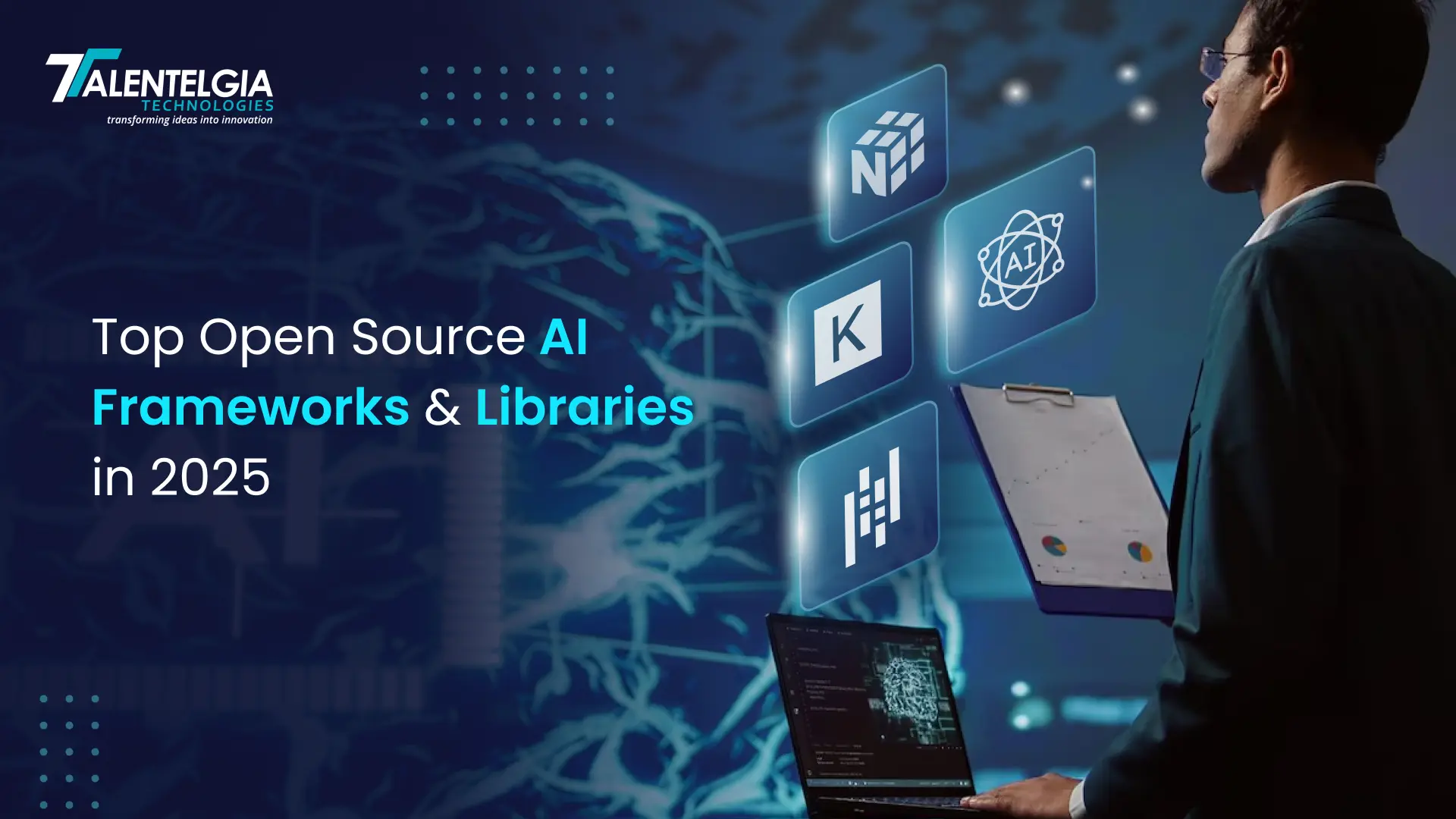

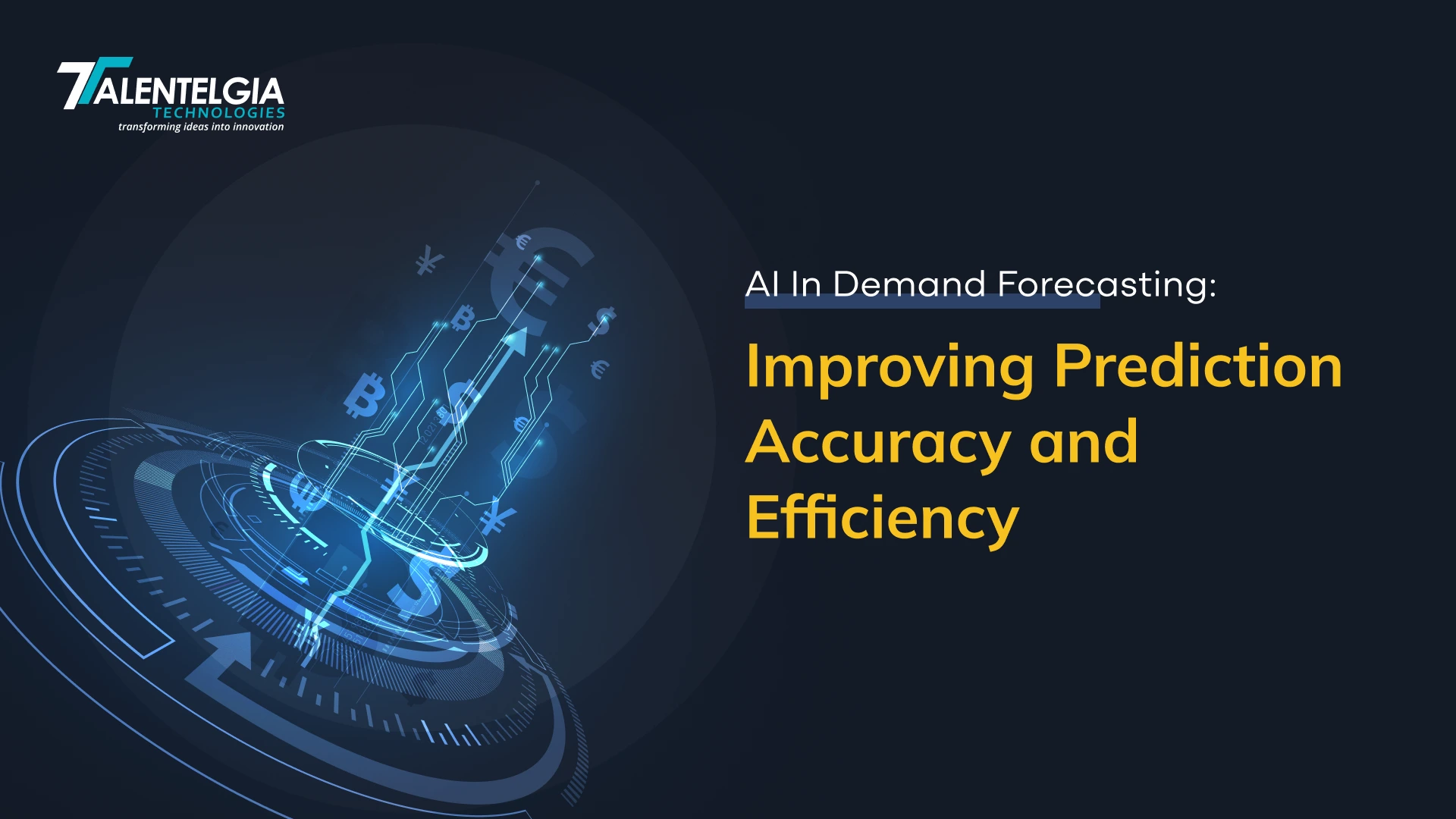

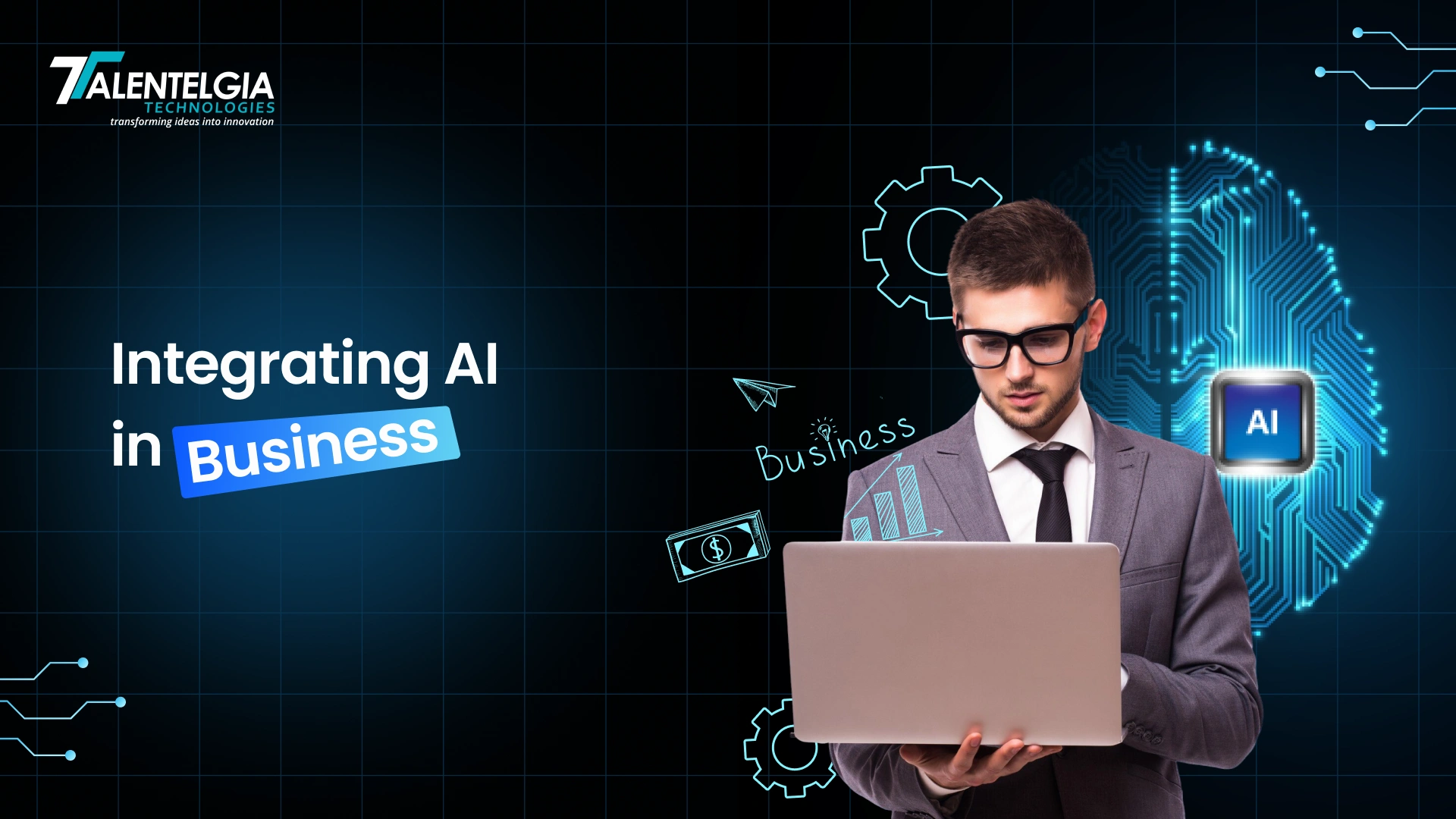

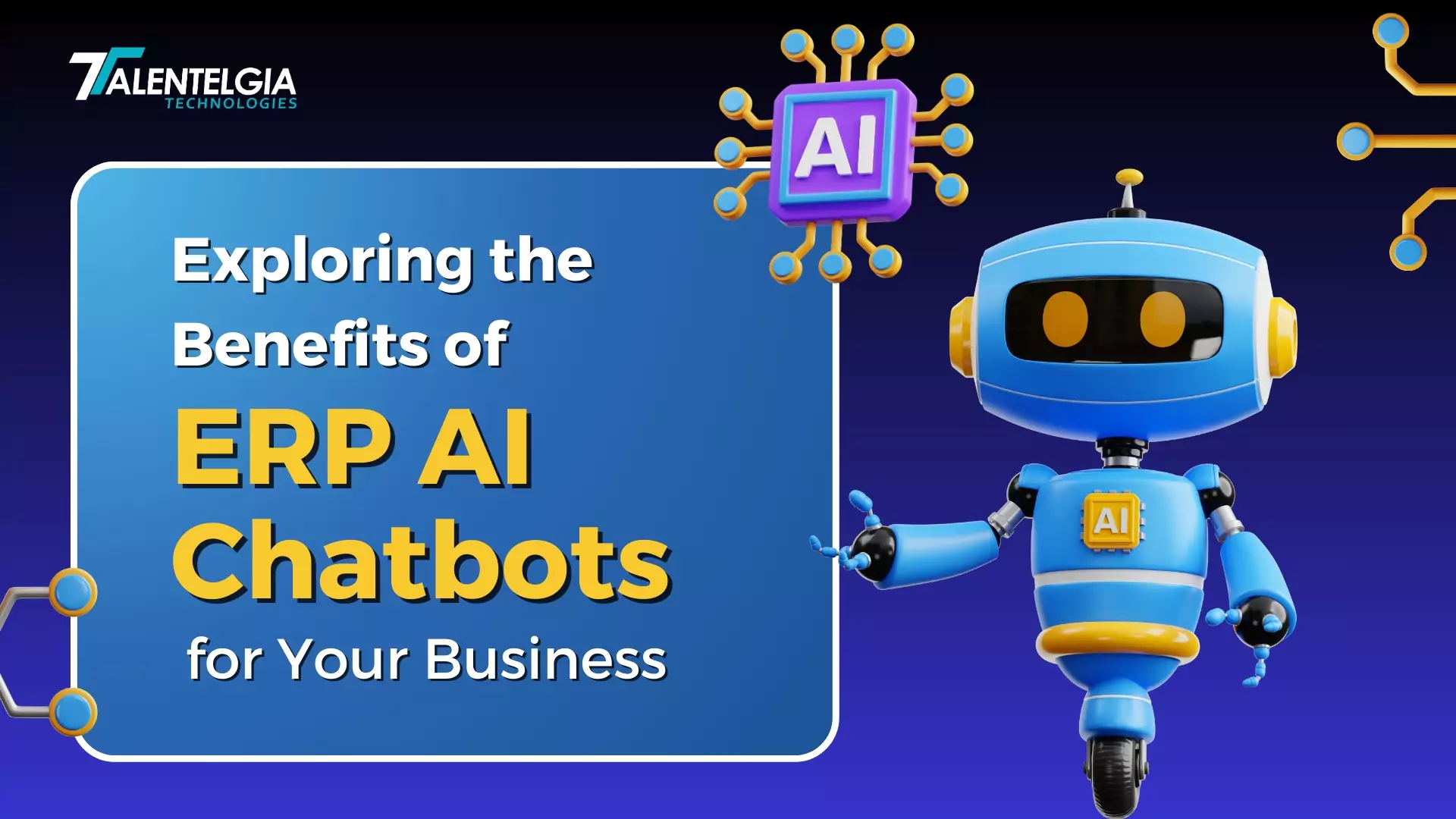











 Write us on:
Write us on:  Business queries:
Business queries:  HR:
HR: 




